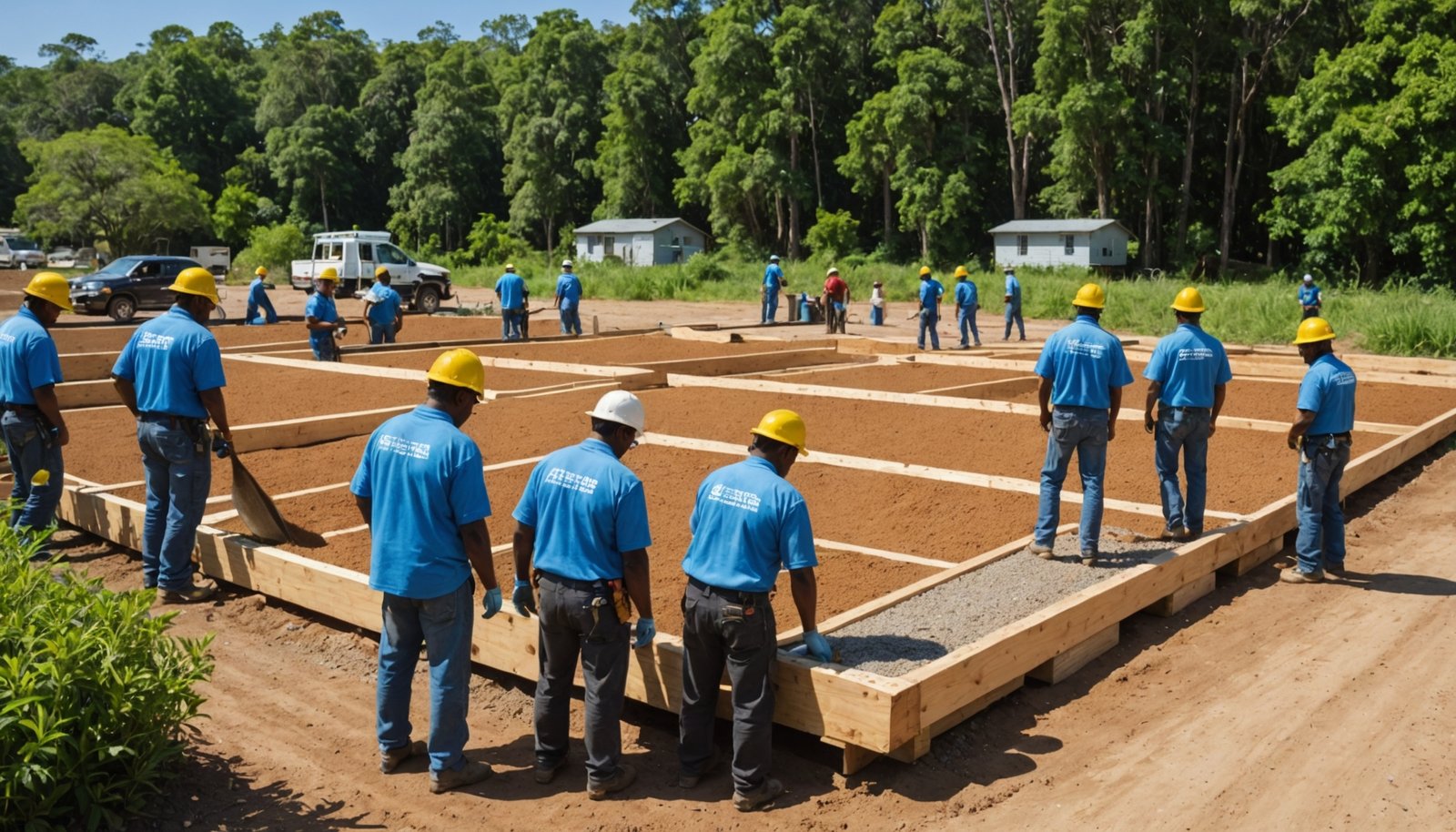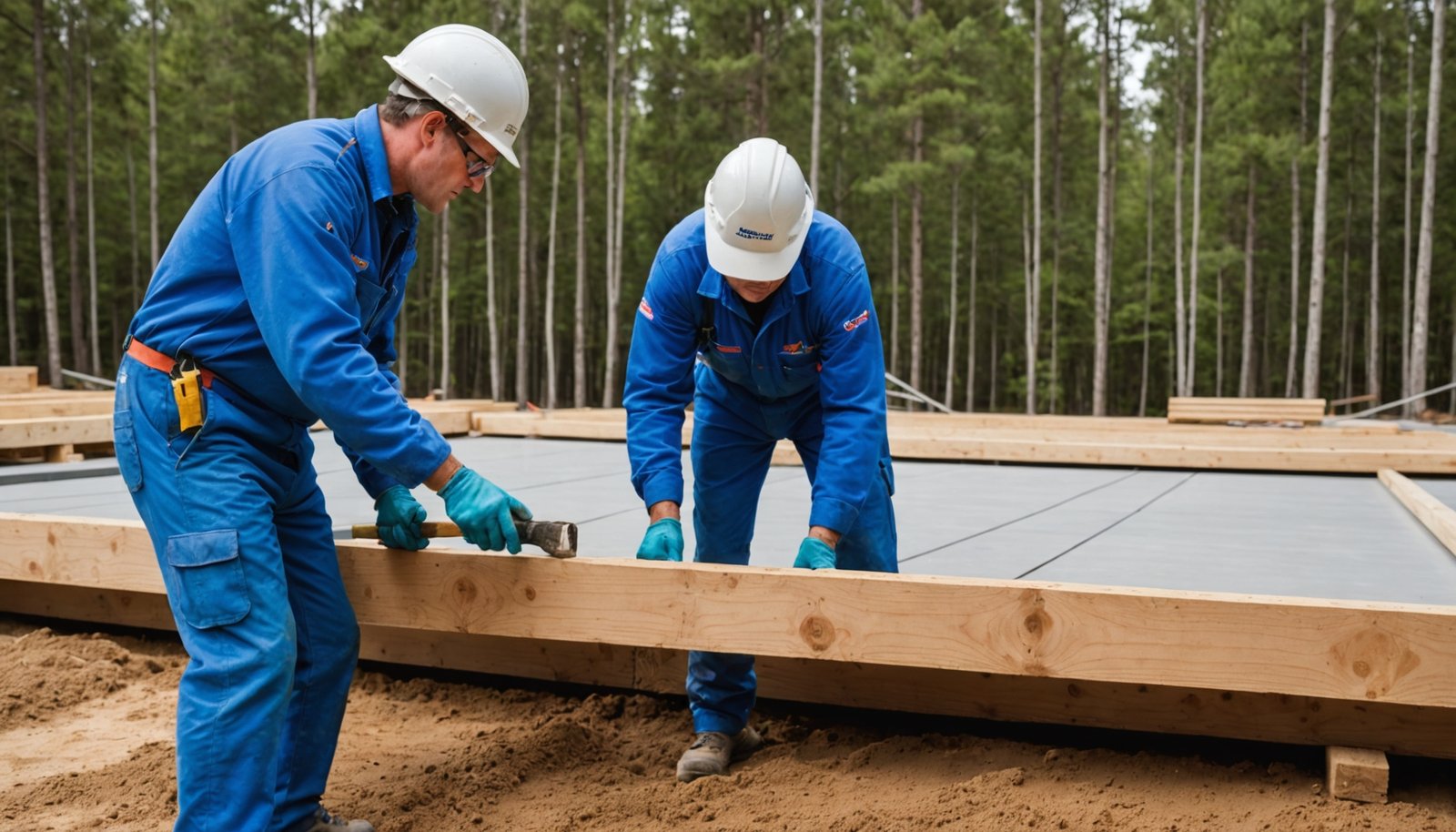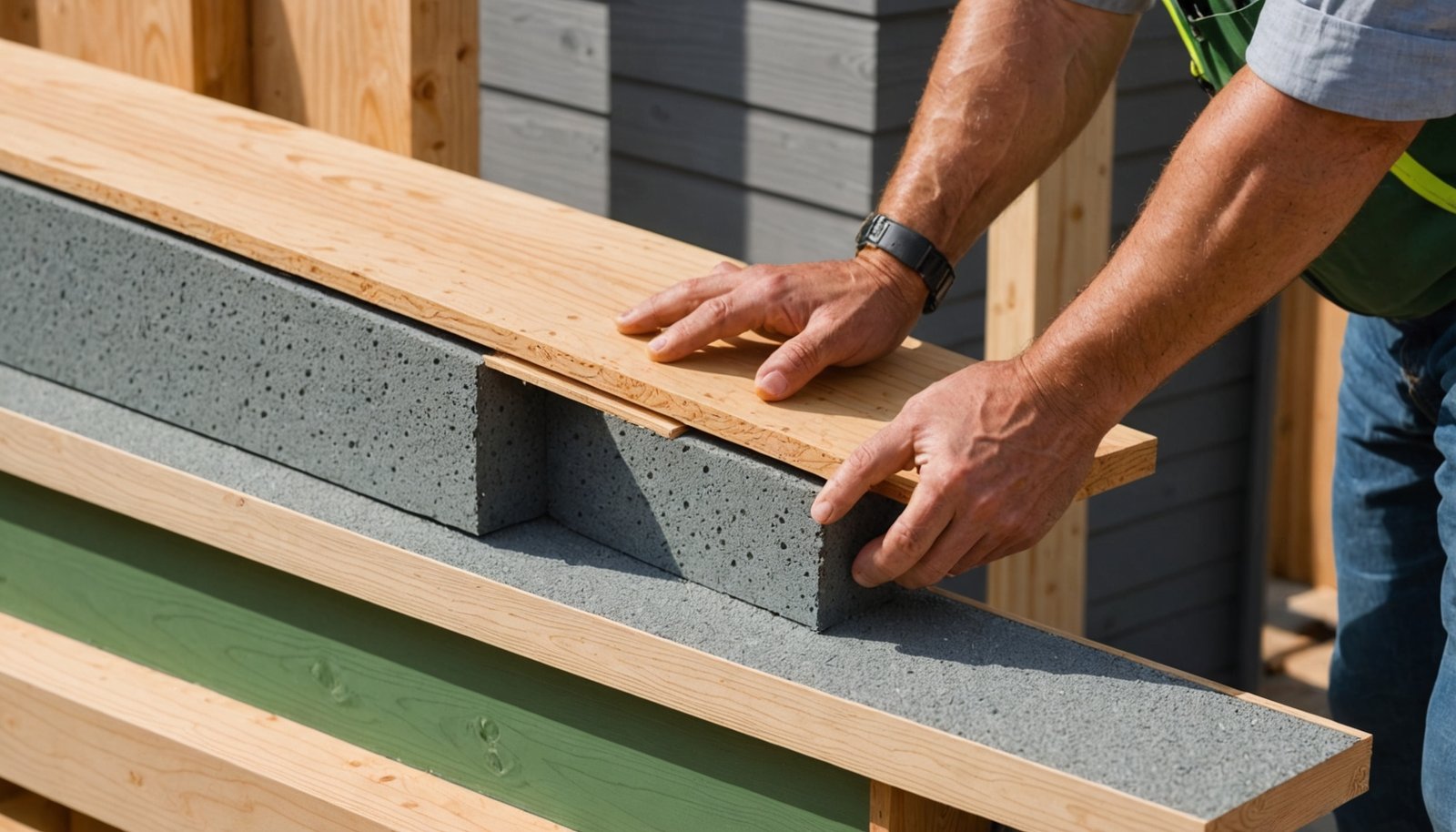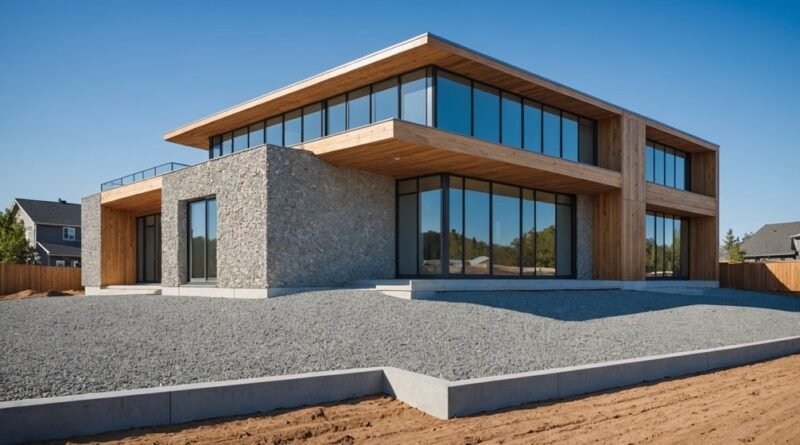How to Prevent Termites in New Construction Homes
You’ll need to protect your new construction home from termites before and during the building process. Start by clearing the site of wood debris and installing proper drainage. Apply professional-grade termiticides to create a chemical barrier, use termite-resistant building materials, and maintain an 18-inch clearance between wood and soil. Don’t forget moisture control through vapor barriers and gutters. There’s much more to learn about keeping these destructive pests at bay.
Key Takeaways
- Apply professional-grade liquid termiticides to the soil before construction at 1-1.5 gallons per 10 square feet of foundation area.
- Install proper drainage systems and moisture barriers in crawl spaces while maintaining 18-inch clearance between wood and soil.
- Use pressure-treated lumber and naturally resistant woods like cedar for construction, especially at ground contact points.
- Install termite monitoring stations around the perimeter and schedule annual professional inspections for early detection.
- Implement proper gutters and downspouts to direct water away from the foundation and prevent moisture accumulation.
Site Preparation and Foundation Protection

When building a new home, proper site preparation serves as your first line of defense against termite infestations.
You’ll need to thoroughly clear the construction area of cellulose-based debris, including stumps and logs that could attract these destructive pests.
For effective foundation protection, you’ll want to implement a thorough drainage system using free-draining soil and install moisture barriers in crawl spaces and under slabs.
Don’t forget to use metal or plastic stakes during construction instead of wooden ones to prevent creating termite entry points.
Maintaining proper ground clearance is essential – make sure there’s at least 18 inches between wood elements and soil in crawlspaces.
These pest management strategies, combined with a treated soil barrier and proper ventilation, will greatly reduce your home’s vulnerability to termite infestations.
Essential Pre-Construction Treatment Methods

You’ll need to start with thorough soil treatment before construction begins, applying liquid termiticides to create an effective chemical barrier that blocks termites from entering through the foundation.
Your construction team should coordinate with pest control professionals to guarantee proper timing of chemical applications, particularly around footings, slabs, and utility entry points.
To maximize protection, you’ll want professional-grade wood treatments applied to critical areas like sill plates and floor joists, coupled with strategic placement of monitoring stations around the perimeter.
Soil Treatment Before Building
Before breaking ground on your new home, proper soil treatment stands as a critical defense against subterranean termites. You’ll need pest control professionals to apply termiticides at 1 to 1.5 gallons per 10 square feet around your foundation. This termite pretreatment creates a protective barrier that’s required in 34 states by HUD.
| Treatment Component | Duration | Effectiveness |
|---|---|---|
| Soil Barrier | 5-7 years | 90% control |
| Professional Application | One-time | Code compliant |
| Combined Protection | Long-term | Enhanced defense |
For maximum termite protection, combine soil treatment with borate wood treatments. These building practices work together to prevent termite infestations and protect your investment from termite damage. The horizontal barrier created through soil treatment provides reliable protection when properly applied by certified professionals.
Chemical Barrier Application Methods
To establish an effective termite barrier, professional applicators must treat the soil with specialized termiticides at a rate of 1 to 1.5 gallons per 10 square feet of foundation area.
You’ll need professional pest control experts who use large-capacity spray tanks of at least 200 gallons to guarantee complete coverage for a typical 2,000-square-foot building site.
When selecting application methods, you’ll find that nonrepellent termiticides offer superior protection against subterranean termites compared to repellent options.
These chemicals create a protective barrier that kills termites as they tunnel through treated soil.
While pyrethroid pretreatments provide effective control for 5-7 years, nonrepellent termiticides can last up to 12 years depending on environmental conditions.
To prevent termite infestations, it’s crucial to have chemical barriers properly installed by qualified professionals.
Professional Wood Protection Steps
When building a new home, professional wood protection serves as an essential first line of defense against termite infestations.
You’ll want to partner with a professional pest control company to implement thorough termite prevention measures throughout the construction process. Start with proper soil treatment before laying the foundation, creating a barrier against termite entry.
Make sure you’re using termite-resistant construction practices by incorporating borate-based treatments on structural wood components.
It’s vital to use pressure-treated wood wherever there’s ground contact. Your pest control professionals should also install a perimeter insecticide treatment system, including bait stations to monitor any termite activity.
These wood treatment methods work together to create multiple layers of protection, ensuring your new home stays termite-free while meeting local building codes and safety standards.
Choosing Termite-Resistant Building Materials

When you’re selecting materials for your new home, you’ll want to focus on pressure-treated lumber for ground contact points and naturally resistant woods like cedar or redwood for exposed areas.
You can further enhance your home’s defense against termites by incorporating metal alternatives, such as aluminum siding and metal termite shields at foundation points.
These material choices, combined with regular inspections, create a robust barrier against termite infestations while maintaining structural integrity.
Best Wood Treatment Options
Since termites pose a significant threat to wooden structures, choosing the right wood treatment and building materials is essential for long-term protection.
You’ll want to start with pressure-treated wood for any components that contact soil, as it provides excellent termite damage prevention. For additional protection, consider using resinous woods like cedar or redwood, which have natural insect-repellent properties.
Borate-based wood treatments offer an environmentally friendly solution that’s effective at both killing and preventing termite infestations.
To maximize protection, combine these treated construction materials with non-wood alternatives like fiber cement for sheathing and siding.
Don’t forget to install metal termite shields or stainless steel mesh barriers around your foundation – these physical barriers provide vital defense against subterranean termites while complementing your treated wood components.
Metal Vs Wood Materials
The choice between metal and wood building materials can dramatically impact your home’s resistance to termite infestations.
While traditional wood construction remains common, metal framing using steel or aluminum offers superior protection since termites can’t consume these materials. If you’re using wood, opt for pressure-treated lumber or naturally resistant varieties like cedar, especially in ground-contact areas.
Consider incorporating termite-resistant materials throughout your construction project. Fiber cement siding and plastic composites eliminate cellulose food sources that attract termites.
For maximum protection against subterranean termites, install metal barriers and mesh shields during the building process. These protective elements prevent termites from accessing your home through foundation gaps.
Moisture Control and Drainage Strategies
Maintaining proper moisture control and drainage around your new home serves as a crucial first line of defense against termite infestations.
You’ll need to guarantee the soil slopes away from your foundation to prevent water accumulation that can attract these destructive pests. Install gutters and downspouts to effectively channel rainwater away from your home’s perimeter.
Don’t forget to add a vapor barrier in your crawl spaces – it’s important for controlling moisture levels and creating an environment that’s less inviting to termites.
Keep all wood elements at least 18 inches above the ground in crawl spaces to minimize termite attraction.
Make regular inspections of your drainage systems part of your maintenance routine to verify they’re working properly and protecting your home from moisture-related termite risks.
Physical Barriers and Defense Systems
Implementing effective physical barriers during construction provides your home with essential protection against termite invasions.
You’ll need to incorporate multiple defense systems to create thorough pest control against subterranean termites. Install stainless steel mesh barriers and termite shields around your foundation, and don’t forget to add termite-proof collars on pipes and conduits.
Complement these physical barriers with chemical barriers in the soil to create an insecticide barrier that deters termite entry.
- Install stainless steel mesh around the entire foundation perimeter
- Apply particle barriers using crushed basalt or specialized sand
- Create chemical soil treatments beneath and around the structure
- Place termite-proof collars on all utility entry points
- Schedule regular inspections to maintain barrier effectiveness
Remember that successful termite prevention requires proper installation and ongoing maintenance of these defense systems.
Professional Treatment and Application Methods
Professional termite pretreatment requires licensed pest control experts who follow strict application protocols during new home construction.
When your professional pest control company applies termite pretreatments, they’ll focus on two key components: horizontal soil treatment and borate wood treatment. They’ll use nonrepellent termiticides diluted with water at 1 to 1.5 gallons per 10 square feet for effective barrier creation.
For ideal termite protection, experts apply Bora-Care during the “dried in” stage, which can safeguard your home for up to 7 years under heavy pressure.
After construction’s complete, they’ll implement perimeter treatments, carefully documenting all applications. This documentation includes treatment dates and contact information, ensuring you can track the protection history and address any potential moisture problems that might compromise the treatment’s effectiveness.
Long-Term Monitoring and Maintenance Plans
To protect your investment in termite prevention, you’ll need a thorough monitoring and maintenance strategy that includes annual inspections and regular system checks.
Effective termite prevention requires ongoing vigilance through systematic monitoring, regular maintenance checks, and professional annual inspections.
Your long-term monitoring plan should integrate both chemical treatments and physical barriers while ensuring compliance with local building codes. You’ll need to maintain clear access around your home’s foundation and prevent moisture accumulation that attracts termites.
- Schedule professional inspections at least once annually to detect early signs of termite activity
- Check and maintain termite baiting systems around your property’s perimeter
- Keep wood elements elevated 18 inches above soil level
- Document all maintenance activities and set reminders for future treatments
- Stay informed about proper homeowner maintenance practices to protect your prevention systems
Conclusion
You’ve got the power to protect your new home from termites right from the start. By implementing proper site preparation, pre-treatment methods, moisture control, and physical barriers during construction, you’ll create a strong defense against these destructive pests. Don’t forget to maintain regular inspections and stay vigilant with your prevention plan to guarantee your investment remains termite-free for years to come.

